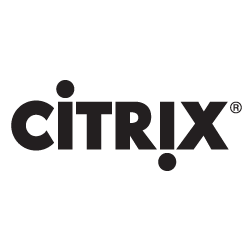This Canadian company aims to turn virtual desktop infrastructure upside down
First, some history. For the past decade and a half, Citrix and then VMWare have promised to deliver virtual desktop  seamlessly and efficiently to the corporate user. Maintenance and patching could be done on images on the server side, and when a user logged in, they would receive the updates. Beautiful!
seamlessly and efficiently to the corporate user. Maintenance and patching could be done on images on the server side, and when a user logged in, they would receive the updates. Beautiful!
Citrix first called it WinFrame, then Metaframe Presentation Server, then finally XenApp.
Anyways, it is server based computing, and they had the market share in virtual desktops and application streaming for the better part of the late 90s through mid 2000s. They used a proprietary protocol called ICA or Independent Computing Architecture to deliver applications or complete desktops to an end user.
This “thin computing“ as it was called could be delivered to a smart terminal or any of the existing desktop platforms of the time, whether it be Windows, MAC OSX, or UNIX/Linux. It was going to greatly reduce the cost of the desktop through reductions in hardware requirements and maintenance.
Years later, Microsoft also joined the game with Microsoft Virtualization Desktop Infrastructure.
- Management
- Access
- Performance
- Security
Through centralizing the desktop images and applications, Management became infinitely easier. You didn’t have to install, patch, or maintain operating systems or applications on a myriad of desktops. You managed them locally on the server, and an end user would get the update when they logged back in.
Access meant that just about every desktop platform used at the time had the ability to render Citrix presentations. As long as they had adequate video capabilities, a keyboard, mouse, and network connectivity, it was likely that they could run Citrix ICA.
Performance was achieved for many applications that required constant backed or file share access. Two-tiered applications where the desktop application connected to a database or file share on the back end could be placed close to that back end and latency was practically removed.
Security was achieved through several artifacts of the technology. Firstly, your data never left the data centre. Merely a video representation of it in the form of an ICA session was made available to your monitor. Secondly patching was done on the image files on the server, and were inherently available the next time the user logged in. Antivirus could be done from the backend, scanning all of the running guest images simultaneously. Updates would be immediate, and complete.
So how come uptake is now less than stellar?
Today, there is little delta in cost between a smart terminal and a low end Intel/AMD based PC. Without the cost incentive, adoption has slowed.
Network’s have become exponentially faster. Today’s network environment has removed most of the latency issues chronically plaguing legacy applications.
Another entire tier of infrastructure is required to satisfy a typical VDI solution. High-end, multi-core server clusters with hundreds of gigabytes of memory are required to host these remote sessions.
Offline is not an option. In a typical VDI infrastructure, when your network saturates or becomes disconnected, your entire farm is unavailable. All workstations cease to work. And most importantly, today’s applications are media-rich. High end graphics and audio processors are the norm on the average desktop purchased, but the server based computing model still fails to deliver on the performance requirements in this area.
So? What’s this upside down VDI thing you started with?
In 2006, Citrix acquired a company/technology called Ardence. Ardence basically stood up generic workstation boot images and user profile drives, and provisioned them through PXE boot to your workstations. You got the benefits of secure patching and antivirus every time you booted, and if there were hiccups in the network, you were still operational. And the image ran locally on your desktop hardware. No huge backend server infrastructure other than the provisioning box, and you could manage all the media performance locally!
Citrix has since rebranded this as Citrix Provisioning Services and focused it more on provision virtual images for its core line of business, the XenApp services as opposed to physical workstations.
Now, if you follow VDI or Citrix in general, the name Brian Madden is etched into your very optic nerves. He is the de facto guru of anything resembling virtualized desktop.
or visit IT World Canada for more Canadian IT News
Source: This Canadian company aims to turn virtual desktop infrastructure upside down | IT World Canada Blog



